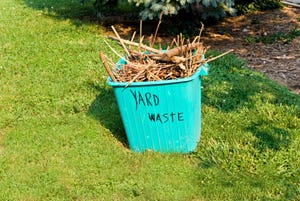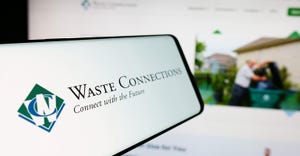How Food Suppliers, Retailers and Restaurants are Joining Forces to Address Food Waste
Their goals are to prevent food waste in the first place, increase donations of surplus food and recycle unavoidable waste.

More food is landfilled in the U.S. than any material, and this waste is generated along the entire supply chain. Recognizing this, the manufacturing, retail and restaurant industries joined forces under the Food Waste Reduction Alliance (FWRA). Their goals are to prevent food waste in the first place, increase donations of surplus food and recycle unavoidable waste.
Many FWRA members are facilitating donation through partnerships. For example, Campbell Soup Co. processed peaches that were edible and nutritious, but would not have been sold, due to specs like size, into peach salsa. Then provided the product to the Food Bank of South Jersey who distributed it to its clients.
Food donation programs and solutions vary by industry segment, says Meghan Stasz, senior director of sustainability for the Grocery Manufacturers Association. She will moderate a session titled Industry Initiatives on Food Recovery: How Businesses are Working to Reduce & Divert Food Waste Across the Supply Chain discussion with members of the Food Waste Reduction Alliance (FWRA) on Monday, May 8 at 1:15 PM at the Food Recovery Forum at WasteExpo in New Orleans.
“Grocery retailers have significant variety in type of food available for donation … so logistics change,” Stasz says. “For instance transportation and storage requirements differ… which makes unpredictability of donation streams a challenge.
“Manufacturers have more consistent product for donation at high-volumes, but sometimes it is not yet packaged. Restaurants have less volume to donate, and restaurant food often becomes available at the end of the day when many food banks are closed,” says Stasz, adding that FWRA finds that partnerships with local food banks can overcome many such challenges.
Conagra Brands has prevented waste from happening in the first place by identifying where it was generated, then making improvements. The company had volumes of excess dough trim in the manufacture of pot pies and tweaked the production process, saving hundreds of pounds of dough a year.
The ability to measure that waste was key to identifying where to reduce. More food industry operations are seeing this, and leveraging data they collect to improve their processes, from purchasing through preparation and serving food.
Sodexo introduced technology into the food production process called Waste Watch by LeanPath, to measure impact of food waste, and ultimately change workers’ behaviors.
“When you measure waste and show employees the weight and value of food and how many meals that equates to, it resonates,” says Ted Monk, vice president of corporate responsibility for Sodexo USA. He will also speak at WasteExpo. “They start to think about ways to ensure forecasting and production is closer to what they need. In pilots the LeanPath tool has helped reduce food waste by about 15 percent.”
Beyond source reduction, the corporation implements waste reduction strategies from feeding animals to donating food fit for human consumptoin, and helps clients do the same.
When food can’t be donated or source reduced, FWRA members work to recycle or recover the unavoidable waste, which is where barriers may come in.
“A main barrier to diverting food waste from landfill is a lack of infrastructure,” Stasz says. “Many food businesses are sending food waste to beneficial alternatives, including anaerobic digestion or compost. Those solutions must be both economically and geographically feasible.… Transporting food waste several hundred miles to the nearest compost facility has a significant environment impact and may offset the benefit of diverting from landfill.”
Publix is among corporations taking the lead. One of the 10 largest-volume supermarket chains in the U.S., it is looking to develop partnerships to build regional infrastructure for greater resource recovery. Publix has sought to recycle more food waste as commercial composting and anaerobic digestion operations become available. And it currently sends organic wastes from its manufacturing facilities to local farmers for animal feed. Through varied efforts, by the end of 2014, more than half of its stores diverted 20,500 tons.
Sodexo focuses on the communities it touches to see that surplus food from its accounts is put to good use.
“Forty percent of what’s grown, harvested and transported in the United States is never consumed,” Monk says. “It’s shocking when there are 48 million food insecure people in this country. So our aim is to encourage our managers to connect in communities where they work to ensure no food goes to waste.”
Over the last 20 years the Sodexo Foundation has donated over $25 million to stop hunger initiatives in communities where the corporation operates.
But ultimately, says Monk, “We want to prevent waste in the first place. And then donate food if there is surplus.”
About the Author
You May Also Like




